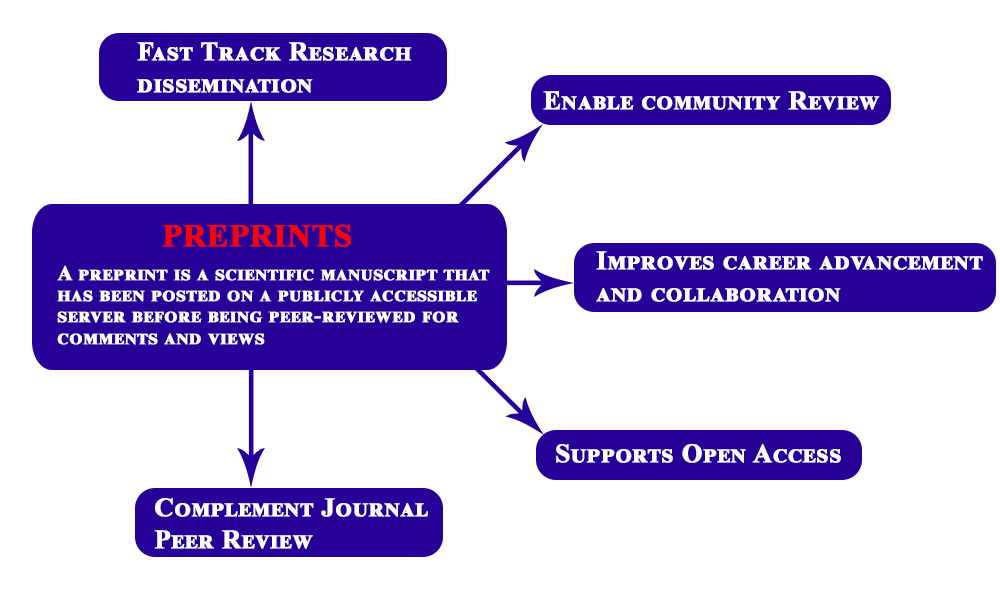Preprint publications have brought about a change in how authors used to publish their scientific research.

In today’s time, when the speed of research dissemination has become most important, preprint publications help authors in achieving faster dissemination of their research. As a result, traditional publishing processes have been modified to meet modern needs, and new options, such as the publication of preprints, have been established.
Let us look at what preprint is, its advantages, and how you can easily publish your article in a preprint server.
Definition of a preprint
Preprints can be defined as scientific manuscripts that are posted freely on openly accessible public servers for views and comments before being published through the traditional peer review route in journals.
A digital object identifier (DOI) is assigned to most preprints so that they can be used as references in other research publications.
Preprints act as a medium for research dissemination before a research manuscript is formally published in a journal.
Preprint articles are published on preprint servers, which are basically online repositories for preprints. Currently, there are many preprint servers you can choose based on the subject of your research, such as bioRxiv for life sciences research, medRxiv for medical sciences research, arXiv for physical sciences research, and many more to publish your research work.
Advantages of a Preprint article in Research
- Readily available research study and fast-tracking research dissemination
- Improving research accessibility & impact
- Potentially fast-tracking opportunities for career advancement and collaboration
- Wider and quicker feedback to authors, thus allowing authors to update manuscript before final publishing
- Gives an opportunity for authors to publish their original research before someone else publishes it
Figure 1: Preprint Benefits
Guidelines for writing a Preprint Article before submitting it to a preprint server:
Due to all these advantages, preprints have been rising in popularity for a few years. Below are a few steps that you must follow before submitting your manuscript so that the intended objective of publishing your work on a preprint server is successfully achieved:
- Understand your research and for whom it will be best suitable, and write your research article
- Write an impactful appropriate title and abstract.
- Follow the Publishing Code of Ethics while writing your research paper.
- Authorship guidelines and consent of all authors must be followed.
- During the submission procedure, link your and all authors’ ORCID to the preprint repository. This improves the credibility of the preprint paper, allowing it to gain greater recognition and citations.
- Finally, understand the specifics of the manuscript withdrawal process before submitting your manuscript.
Steps to Publish on a Preprint Server:
For the final submission of your manuscript following steps will be required:
- Based on the topic of research, choose an appropriate preprint server.
- On the preprint server site, create an account and register as an author.
- Submit the abstract and the article in accordance with the preprint server’s publication criteria.
- After a basic screening of scientific content, author background, and ethical aspects, the article is published and made available publically on the repository for others to access, distribute, comment on, and cite.
Conclusion
Preprints are a wonderful tool for publication. It helps authors publish the early findings of their research work quickly and safeguard their credit and visibility of their work in the research community while getting feedback for improvement. It helps in much faster dissemination of research compared to the peer review mode of publication and hence will remain an alternative mode of publication. In spite of this, authors will always need to maintain caution about whether preprint publications are suitable for their research work or not before submission. Further following the guidelines of publication will help in successfully publishing your research work in preprint.

